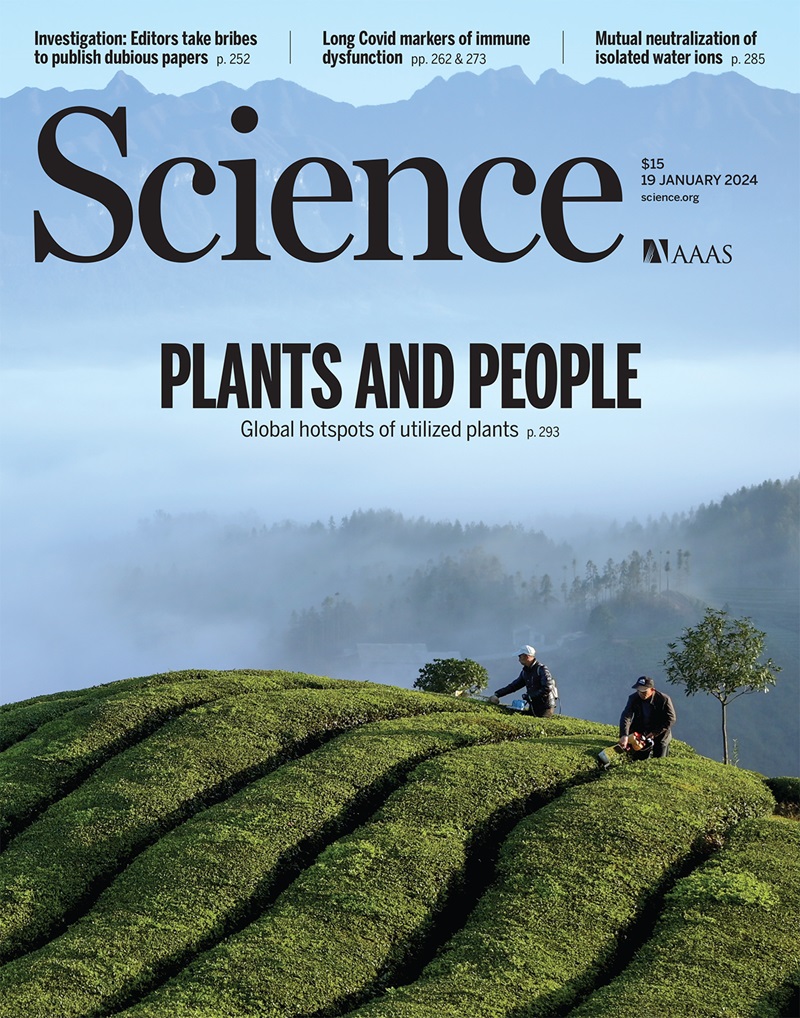ASB7 is a negative regulator of H3K9me3 homeostasis
IF 44.7
1区 综合性期刊
Q1 MULTIDISCIPLINARY SCIENCES
引用次数: 0
Abstract
The maintenance of histone H3 lysine 9 trimethylation (H3K9me3) involves the recognition of preexisting modifications by heterochromatin protein 1 (HP1), which recruits the methyltransferase suppressor of variegation 3-9 homolog 1 (SUV39H1) to methylate the adjacent newly incorporated histones, establishing a positive feedback loop. However, how this positive feedback is restricted to maintain H3K9me3 homeostasis remains largely unknown. We performed an unbiased genome-scale CRISPR-Cas9 screen and identified CUL5ASB7 E3 ubiquitin ligase as a negative regulator of H3K9me3. ASB7 is recruited to heterochromatin by HP1 and promotes SUV39H1 degradation. During mitosis, cyclin-dependent kinase 1 (CDK1) phosphorylates ASB7, preventing its interaction with SUV39H1, leading to SUV39H1 stabilization and H3K9me3 restoration. Our findings reveal a dynamic circuit involving HP1, SUV39H1, and ASB7 that governs H3K9me3 homeostasis, ensuring faithful epigenetic inheritance and preventing excessive heterochromatin formation.
ASB7是H3K9me3稳态的负调节因子。
H3K9me3的维持涉及HP1对先前存在的修饰的识别,HP1招募甲基转移酶SUV39H1将相邻的新纳入的组蛋白甲基化,从而建立一个正反馈循环。然而,这种正反馈是如何被限制以维持H3K9me3体内平衡的,在很大程度上仍然是未知的。在这里,我们进行了无偏倚的基因组级CRISPR-Cas9筛选,并鉴定出CUL5ASB7 E3泛素连接酶是H3K9me3的负调节因子。ASB7被HP1募集到异染色质上,促进SUV39H1的降解。在有丝分裂过程中,CDK1磷酸化ASB7,阻止其与SUV39H1的相互作用,导致SUV39H1稳定和H3K9me3恢复。我们的研究结果揭示了一个涉及HP1、SUV39H1和ASB7的动态电路,该电路控制H3K9me3的内稳态,从而确保忠实的表观遗传并防止过多的异染色质形成。
本文章由计算机程序翻译,如有差异,请以英文原文为准。
求助全文
约1分钟内获得全文
求助全文
来源期刊

Science
综合性期刊-综合性期刊
CiteScore
61.10
自引率
0.90%
发文量
0
审稿时长
2.1 months
期刊介绍:
Science is a leading outlet for scientific news, commentary, and cutting-edge research. Through its print and online incarnations, Science reaches an estimated worldwide readership of more than one million. Science’s authorship is global too, and its articles consistently rank among the world's most cited research.
Science serves as a forum for discussion of important issues related to the advancement of science by publishing material on which a consensus has been reached as well as including the presentation of minority or conflicting points of view. Accordingly, all articles published in Science—including editorials, news and comment, and book reviews—are signed and reflect the individual views of the authors and not official points of view adopted by AAAS or the institutions with which the authors are affiliated.
Science seeks to publish those papers that are most influential in their fields or across fields and that will significantly advance scientific understanding. Selected papers should present novel and broadly important data, syntheses, or concepts. They should merit recognition by the wider scientific community and general public provided by publication in Science, beyond that provided by specialty journals. Science welcomes submissions from all fields of science and from any source. The editors are committed to the prompt evaluation and publication of submitted papers while upholding high standards that support reproducibility of published research. Science is published weekly; selected papers are published online ahead of print.
 求助内容:
求助内容: 应助结果提醒方式:
应助结果提醒方式:


